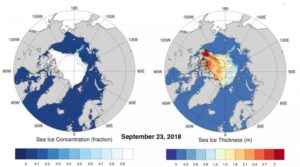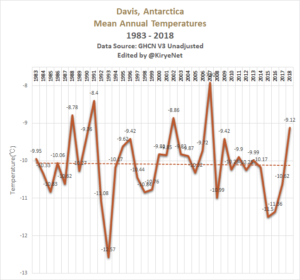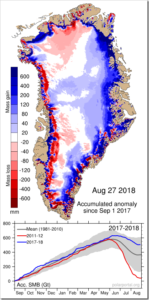by Klimanachrichten, Oct 23,2023 in ClimateChangeDispatch
We have carefully read the definition of a “tipping point” as conveyed by the Potsdam Institute (PIK):
“It’s like a pencil that you push further and further over the edge of a table with your finger. First nothing happens – then it falls.” That’s what the PIK website says.
Nothing can bring the pencil back to the table except a failure of gravity, which is not conceivable. [emphasis, links added]
Then PIK lists various “elements” that are supposed to exhibit such behavior. To the Greenland Ice Sheet (GrIS), one finds:
There are indications that the tipping point, which leads to an almost complete loss of ice in the long term (about 10,000 years), could probably be reached at a global warming of just under 1.5°C (possible from 0.8°C global warming, at the latest at 3°C).“
Now there’s a paper on the subject that has appeared in “Nature“, which paints a different picture. It finds that even after a possibly “critical warming threshold” has been crossed, “the pencil does not fall down”:
We find several stable intermediate ice-sheet configurations … that return to the present-day state if the climate returns to present-day conditions.”
In addition, models often determine the warming in Greenland (the root of the evil) using the mean global warming rate and then apply an “Arctic amplification” factor to each warming to determine the temperature swing in Greenland.
The paper states:
Recently, it has been shown that the Arctic warms four times faster than the global average and thus substantially exceeds previous estimates and projections from climate models.
Arctic amplification of this magnitude would reduce the safe space for the GrIS substantially. However, surface temperatures around Greenland might not increase that severely in the future.”
Observations since 2000 now show that during this period, the warming of the Arctic is far from uniform:
…




